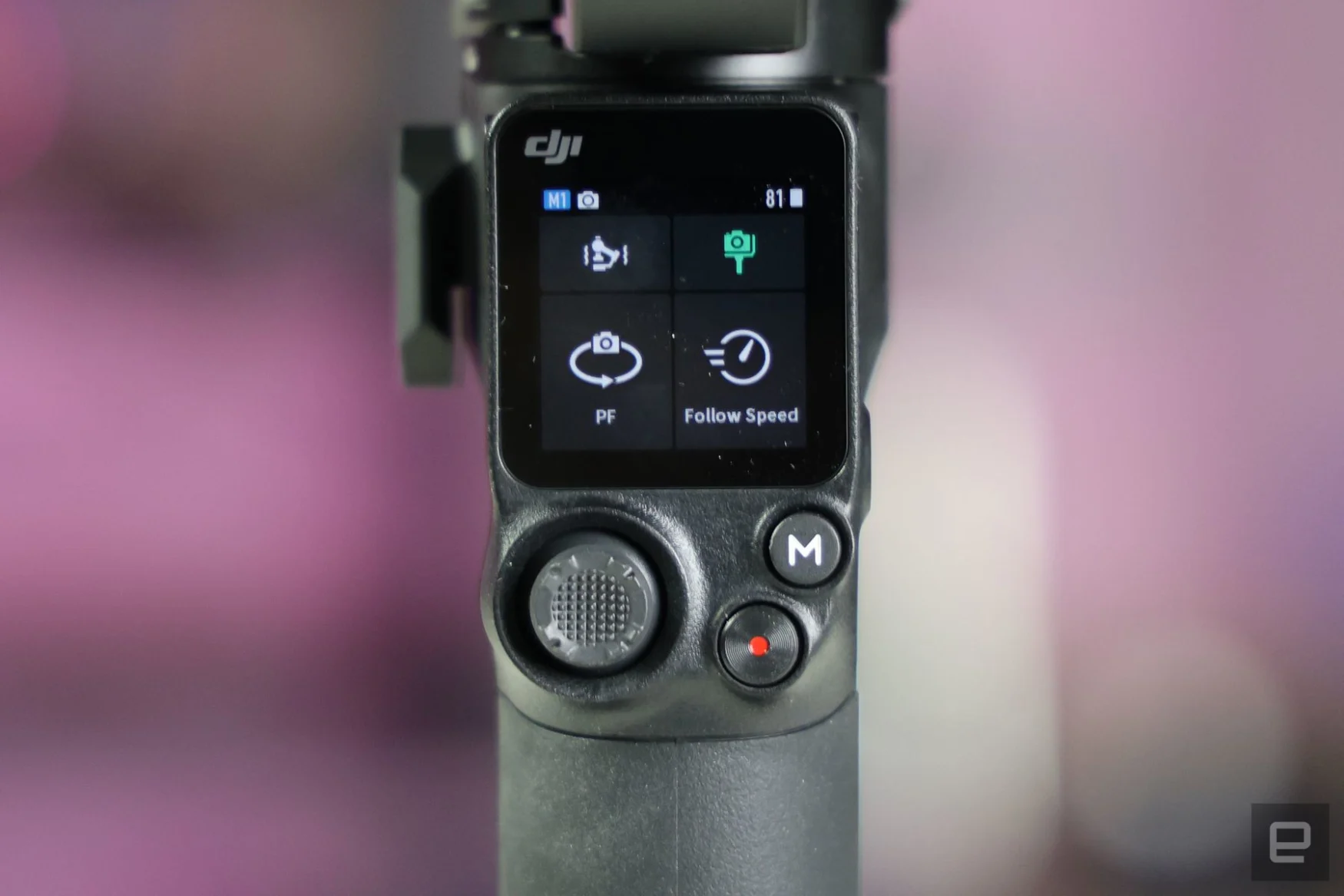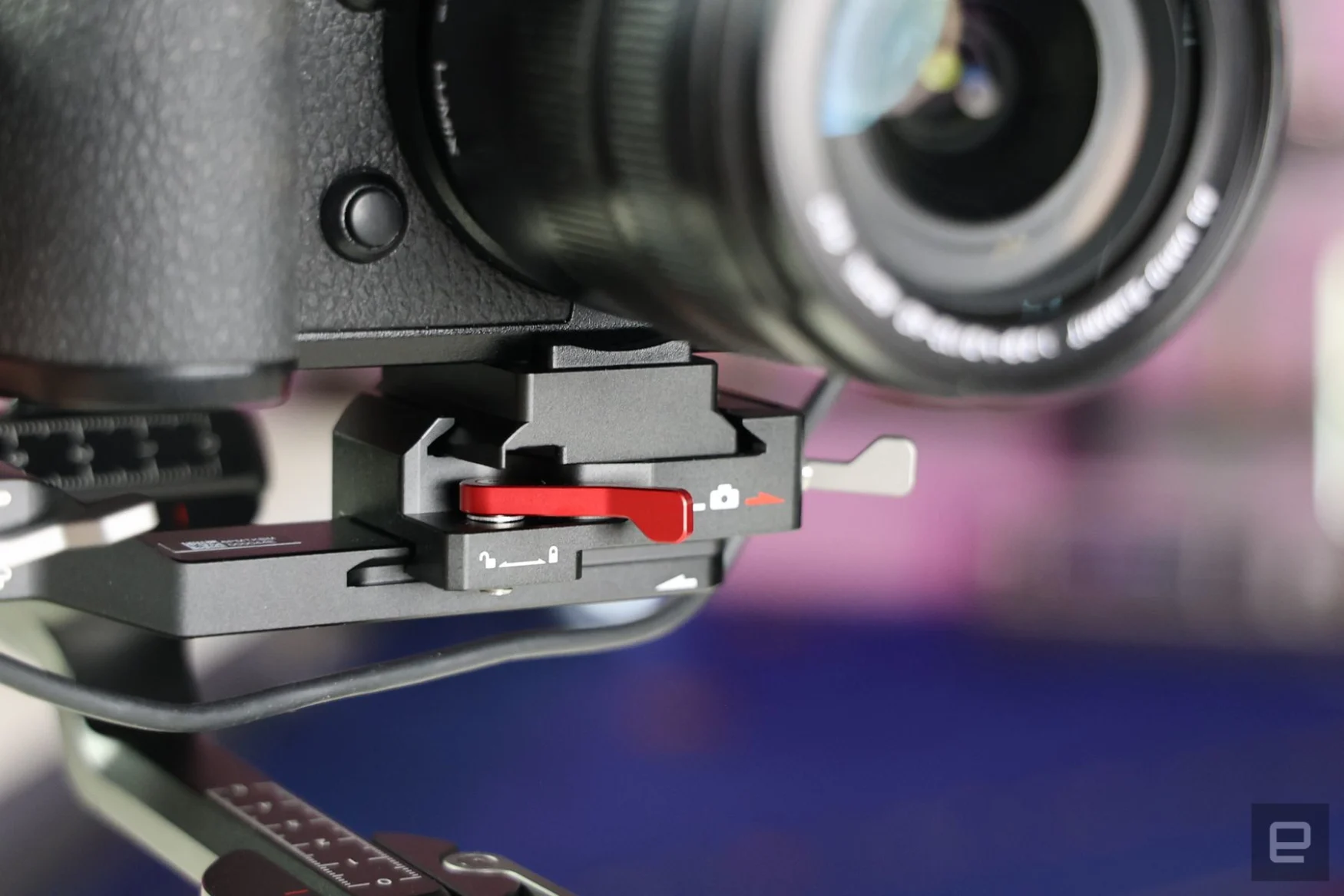DJI's lightweight RS 3 Mini camera stabilizer is designed to be used with one hand
Where DJI’s RS 3 and RS 3 Pro stabilizers were about maximum convenience and power, the company’s latest is designed to reduce as much weight as possible. The new RS 3 Mini weighs in at just 1.8 pounds, but can carry cameras up to 4.4 pounds, which includes heavy mirrorless models like Canon’s EOS R3 and even some cinema cameras. At the same time, it offer’s DJI’s latest stabilization algorithms, easy controls and more.
DJI has tested the RS 3 Mini with cameras like the Sony A7S III with a 24-70mm f/2.8 GM lens, the Canon EOS R5 with an RF24-70mm f/2.8 STM lens or a Fuji X-H2S and XF 18-55mm f/2.8-4.0 lens. I tried it with a Panasonic GH6 and 12-60mm f/2.8-4 and a Canon EOS R6 Mark II with a 24-104mm f/4 and had no problems. “A powerful motor ensures that even when the zoom reaches the maximum focal length, the footage captured remains stable, and there is no need to repeat balancing,” DJI says.
Gallery: DJI RS 3 Mini camera gimbal | 15 Photos
Gallery: DJI RS 3 Mini camera gimbal | 15 Photos
It’s relatively easy to mount cameras thanks to the newly designed dual layer quick-release plate. That also allows for vertical shooting if you attach the plate to vertical arm, and there are no rotation angle limitations in that mode. As with the RS3, the sliding quick release plates make it easy to balance in just a few minutes.
It supports both wired and wireless Bluetooth shutter/record activation via the RS3 Mini’s record button, with the camera ready to go as soon as it’s turned on. For Sony cameras with supported power zoom lenses, you can also control the zoom using the front dial without the need for a camera control cable. It offers the usual other DJI Ronin control dials, including a joystick, M button to switch modes, a trigger, a front dial and the aforementioned record button. You can also add Ronin accessories like the Briefcase handle, fill lights or microphones.

Functions are controlled by the 1.4-inch full-color touchscreen, letting you change shooting modes, balance the gimbal motors and more. You can also do much of that with the app, or set functions like Timelapse, Track recording (move along up to 10 preset points) and Panorama. Finally, it can go up to 10 hours on a charge with the integrated battery handle and can be fully charged in as little as 2.5 hours with a 10W charger.
I had a chance to briefly try out DJI’s RS 3 Mini, and my early impressions were good. I’m not much of a gimbal guy as I often work alone and don’t have the need for tracking shots very often. However, this one is so light that I was able to use it a fair while without tiring out. It’s also very convenient — there was no need to rebalance even if I zoomed out or changed my camera’s configuration. And I was able to shoot most of my footage one-handed, as DJI promises. The results were great — it produced very smooth footage, both in the horizontal and vertical configurations.

The RS 3 Mini is also a relative bargain compared to the $550 RS 3 Pro. It’s available for purchase today at authorized retailers or DJI’s Store for $369 (339 GBP/ 389 EUR). If you’re concerned about knocking it into a wall, DJI’s Care Refresh insurance is now available for the RS 3 Mini, as well.

















